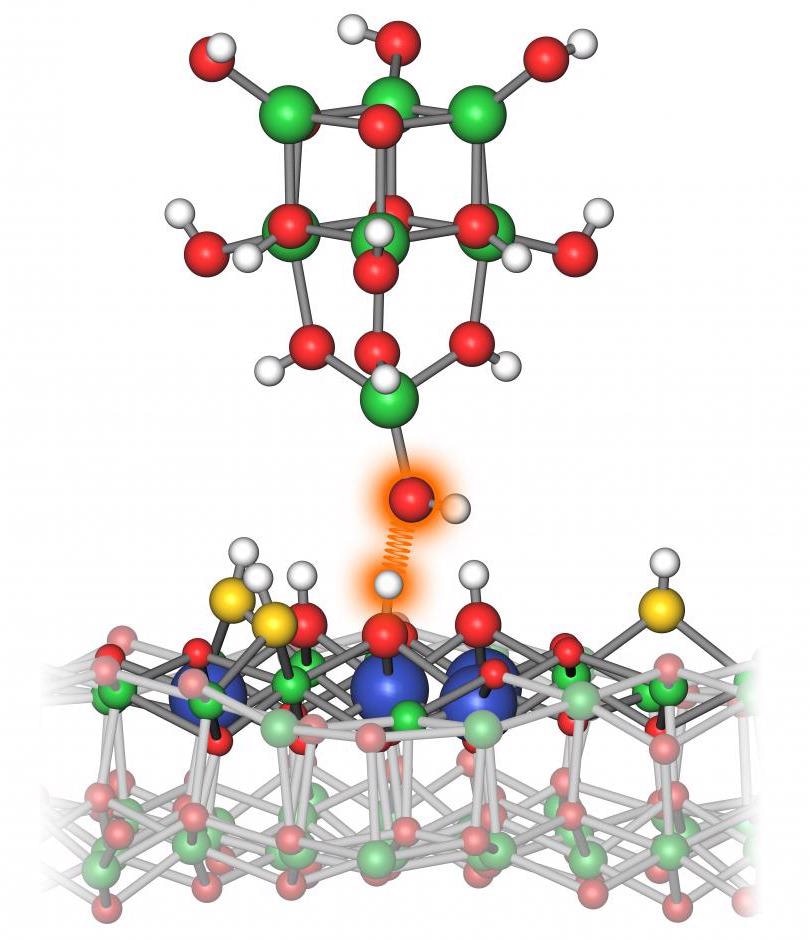Apr 29 2021
The chemical behavior of a substance is mainly governed by its degree of acidity or alkalinity. The so-called proton affinity plays a role as a decisive factor and shows how easily an entity emits or attracts a single proton.
 Using the modified tip of an atomic force microscope, individual atoms in the surface can be probed. Image Credit: TU Wien.
Using the modified tip of an atomic force microscope, individual atoms in the surface can be probed. Image Credit: TU Wien.
The measurement of the proton affinity of molecules has been relatively easy than it is for surfaces. This is crucial because atoms on surfaces exhibit extremely different proton affinities, based on where they are located.
Now, for the first time, scientists from TU Wien have successfully made this crucial physical quantity experimentally accessible. They achieved this by using a specially modified atomic force microscope to analyze the proton affinity of individual atoms. This should be helpful in the investigation of catalysts on an atomic scale. The findings of the study have been reported in the scientific journal Nature.
Precision Instead of Average
All previous measurements of surface acidity had one severe drawback. Although the surface atoms behave chemically differently, one could only ever measure the average value.
Ulrike Diebold, Professor, Institute of Applied Physics, TU Wien
Hence, it is not identified which atoms contributed to chemical reactions, and to what extent. This renders it unfeasible to tweak the atomic scale of the surface to benefit some chemical reactions. However, that is precisely what is required, for instance, when searching for more efficient catalysts for hydrogen production.
“We analyzed surfaces made of indium oxide. They are particularly interesting because there are five different types of OH groups with different properties on the surface,” stated Margareta Wagner, who performed these measurements in Prof. Diebold’s lab.
Using a special trick, the researchers could study these OH groups individually. They positioned a single OH group at the tip of an atomic force microscope. Then, this tip was placed particularly over one specific atom on the surface. Subsequently, a force acts between the OH group directly below the tip on the indium oxide surface and the OH group on the tip. This force sensitively depends on the distance between the OH groups.
We vary the distance between the tip and the surface and measure how this changes the force. This gives us a characteristic force curve for each OH group on the surface of a material.
Margareta Wagner, Institute of Applied Physics, TU Wien
The shape of this force curve offers information related to the extent to which respective oxygen atoms on the indium oxide surface hold their protons—or how easily they will discharge them.
Theoretical study was crucial to obtain an actual value for the proton affinity. This was performed by Bernd Meyer at the Friedrich-Alexander-University Erlangen-Nürnberg, Germany. Through elaborate computer simulations, it was feasible to demonstrate how the force curve of the atomic force microscope can be simply and accurately translated into those quantities required in chemistry.
Nanostructure Governs the Quality of Catalysts
This is quite crucial for the further development of catalysts. We know that atoms of the same type behave quite differently depending on their atomic neighbors and the way they are incorporated into the surface.
Bernd Meyer, Interdisciplinary Center for Molecular Materials, Friedrich-Alexander-University Erlangen-Nürnberg
For instance, it can be crucial whether the surface is ideally smooth or has steps on an atomic scale. Atoms that have only a few neighbors are placed at such step edges, and they can prospectively improve the chemical reactions significantly or worsen them.
“With our functionalized scanning force microscope tip, we can now precisely investigate such questions for the first time,” added Ulrike Diebold. “This means that we no longer have to rely on trial and error, but can precisely understand and improve chemical properties of surfaces.”
Journal Reference:
Wagner, M., et al. (2021) Direct assessment of the acidity of individual surface hydroxyls. Nature. doi.org/10.1038/s41586-021-03432-3.